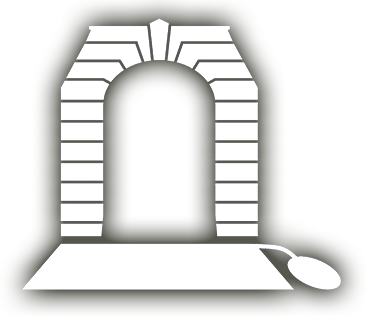LOTT, Alfred James
| Service Number: | 5396 |
|---|---|
| Enlisted: | 25 March 1916, Melbourne, Vic. |
| Last Rank: | Private |
| Last Unit: | 23rd Infantry Battalion |
| Born: | Newport, Vic., 1891 |
| Home Town: | Woodend, Macedon Ranges, Victoria |
| Schooling: | Bolinda State School |
| Occupation: | Railway Fettler |
| Died: | Natural Causes, 20 May 1990, place of death not yet discovered |
| Cemetery: |
Fawkner Memorial Park Cemetery, Victoria Roman Catholic SX, Grave 67 |
| Memorials: | Ballarat Australian Ex-Prisoners of War Memorial, Bolinda State School Honour Roll, Woodend War Memorial Clock Tower |
World War 1 Service
| 25 Mar 1916: | Enlisted AIF WW1, Private, 5396, 23rd Infantry Battalion, Melbourne, Vic. | |
|---|---|---|
| 1 Aug 1916: | Involvement Private, 5396, 23rd Infantry Battalion, --- :embarkation_roll: roll_number: '14' embarkation_place: Melbourne embarkation_ship: HMAT Miltiades embarkation_ship_number: A28 public_note: '' | |
| 1 Aug 1916: | Embarked Private, 5396, 23rd Infantry Battalion, HMAT Miltiades, Melbourne |
Help us honour Alfred James Lott's service by contributing information, stories, and images so that they can be preserved for future generations.
Add my storyBiography contributed
Son of Johnathan Charles Lott and Annie nee Carton (married 1888). John (b. 1890) James was born a year later, in 1891 in Williamstown. Johnathan and Annie also had Annie Oliver (b. 1889), Laura Amelia (b. 1896), and Thomas William (b. 1902). Jack and James attended Bolinda School sometime between 1895 and 1913 along with their siblings Annie, Laura and Thomas.
Prior to enlisting in the armed forces, Jack and James were living together in Footscray, James working as a quarryman and later railway fettler, and Jack as a skilled labourer.
James Lott enlisted three days after Jack. Like his brother, James also fought in France. He departed Melbourne in August 1916 aboard the “Miltiades”. On 20 March 1917, James was reported missing and was later found to have been captured in Lagnicourt and was being held as a prisoner of war in Germany. He was interned at Gefangenenlager, Limburg and was repatriated on 17 December 1918 (Photo 29). James provided the following account of his capture and time as a prisoner of war:
“At about daylight on the morning of 20.3.17., my Battalion attacked the village of LAGNICOURT, then held by the Germans. To reach the village we had to go about 800 yards. My Company advance along a sunken road running into the Village. We advanced faster than the Battalion, which was up on top, crossing No. Man’s Land in short rushes. But when we had got to within 150 yards of the village an enemy machine opened up on us and our losses were very heavy. There were no Officers within us in the sunken road. Then enemy machine gun fire opened on us, about a dozen of us took shelter in an enemy machine gun post in the side of the sunken road. We had one serviceable Lewis Gun with us and one that was not. Lance Corporal MAWSON was with us, he was the only N.C.O., We received no orders to retire and hung on where we were. We got our Lewis gun into action and repelled a couple of attacks that were made upon our post. At about midday when the enemy again attacked us our machine gun jambed, and the enemy rushed us and overpowered us. We had suffered several casualties and there were some dead Australians lying about in the sunken road. We eventually reached CAMBRAI and there there were about 30 of us. We were at CAMBRAI about 2 months and then moved into GERMANY, first to MUNSTER then to MINDEN and then “on commando” attached to, SENNELAGER. The commando was railway work at SCHALKMUHLE. I was there from July 17th till October 17th. There were four other Australians there. My next commando was at HERZAGENATH, (attached LIMBURG), the work being as before. I was there till 2.2.18, then I was returned to SCHALKMUHLE and was there until the signing of the Armistice. We were mustered at SENNELAGER, about 1700 British prisoners of war. We crossed into HOLLAND on 7.12.18 and left ROTTERDAM on 14.12.18 arriving 15.12.18. Pte CLEARY of the 3rd Battalion, while on commando at PEVELSBERG, became insane and was removed.”
James returned to Australia in March 1919 aboard the “Nevasa”. James and Jack appear to have moved in with their parents in Coburg when they returned from war. James took a job as a railway employee and Jack worked as a labourer.
In 1922, James married Esme Doris Foster, a Sunbury lass. Esme moved in to the Lott family home and within a year of their marriage, Esme had given birth to a boy whom they named Keith Albert John (b. 1923, d. 1972). Keith followed in his father’s footsteps and fought in World War II (Service Number: 410902).
By the early-1930s, James and Esme were living on their own in High Street, Coburg. Jack and Laura continued living with their parents in Victoria Street, Coburg. Both James and Jack were working as railway employees at this time. This arrangement continued into the 1950s. By 1954, Jack, his parents and his sister Laura moved to Mayfield Street, Coburg, while James and Esme continued on in their High Street house. Following Esme’s death in 1962, Keith, at that time a sheet metal worker, moved in with his father in High Street. At another location within Coburg, Jack (also a railway employee) was living with his brother Thomas and his sister Laura (home duties). By the late 1960s, Jack, Thomas and Laura had moved in with James and Keith. Jack died in 1973. James and Laura continued to reside at their High Street home at least into the 1980s. James died in May 1990, one year short of his 100th birthday







